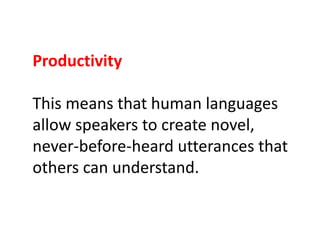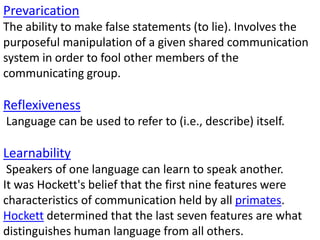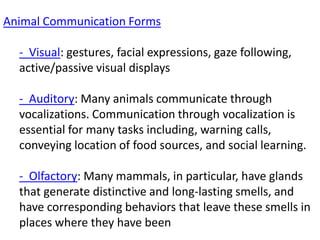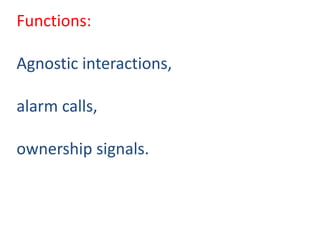This document discusses the origins and design features of human language. It explores various religious and scientific theories on how language originated, including divine sources, experiments on infants, and theories that early words imitated natural sounds or gestures. The document also outlines Charles Hockett's design features that characterize human language, such as arbitrariness, cultural transmission, productivity and displacement. Finally, it compares animal communication forms and functions to human language.
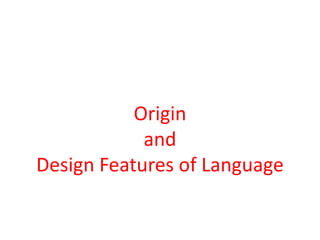








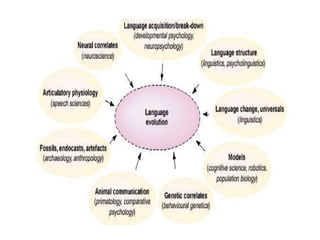
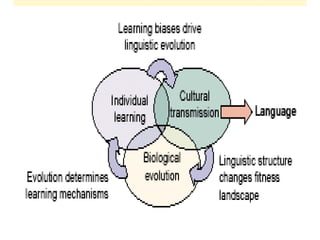
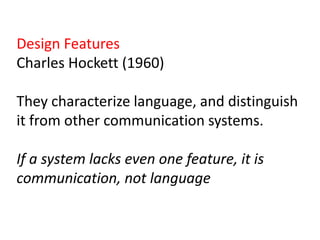
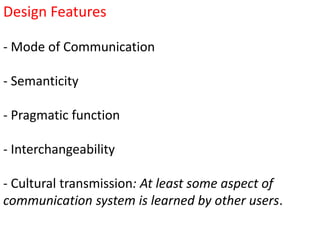



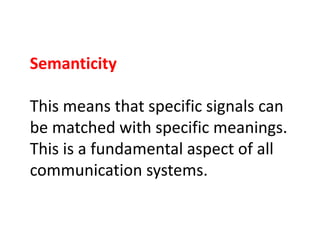

![Discreteness
This means that the basic units of speech (such
as sounds) can be categorized as belonging to
distinct categories. There is no gradual,
continuous shading from one sound to another
in the linguistics system, although there may be
a continuum in the real physical world. Thus
speakers will perceive a sound as either a [p] or
a [b], but not as blend, even if physically it falls
somewhere between the two sounds.](https://image.slidesharecdn.com/design1afeaturesoflanguage-220404072043/85/Design1a_Features_of_Language-pptx-19-320.jpg)
